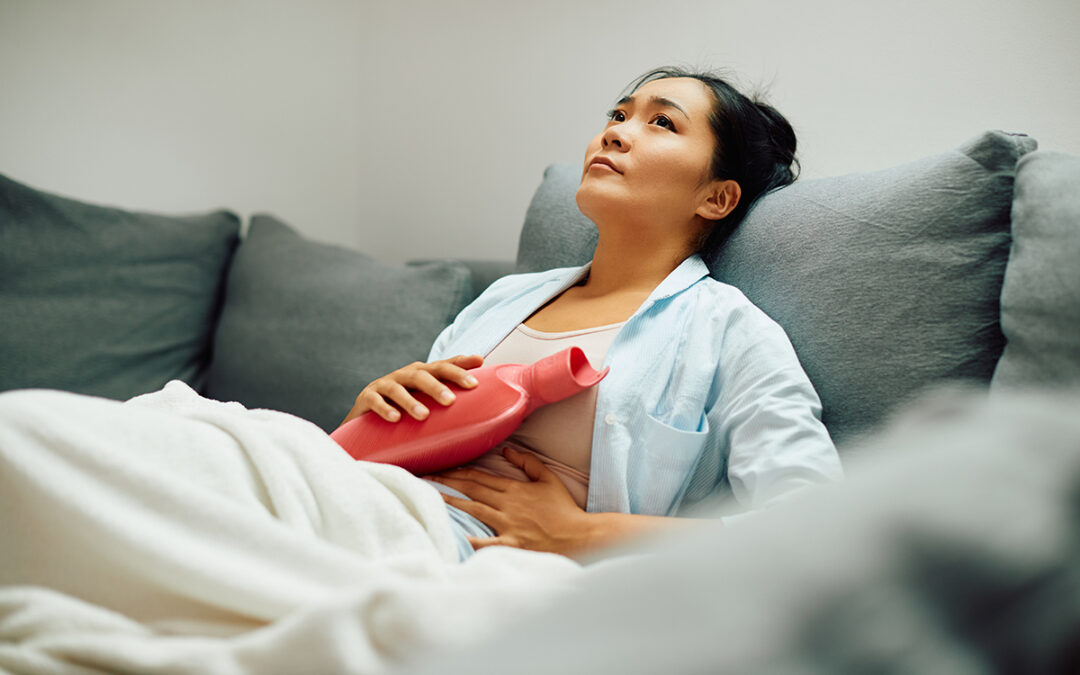We’re going to do some deep dives into health conditions that affect women. In this blog, we’re looking into exactly what is Endometriosis and the symptoms it produces.
What exactly is Endometriosis?
Endometriosis is a gynecological condition that affects millions of women worldwide. It is a chronic, painful disorder where tissue similar to the lining of the uterus (endometrium) grows outside of the uterus and on other organs within the pelvic region.
Symptoms of endometriosis include severe menstrual cramps, pain during sex, painful bowel movements or urination, heavy or irregular periods, and infertility. While the exact cause of endometriosis is unknown, it is believed to be related to a combination of hormonal and immune system factors.
Diagnosis of endometriosis is often delayed due to its similarity to other conditions and the lack of specific diagnostic tests. A definitive diagnosis can only be made through laparoscopic surgery, where a doctor can visualize the growth of endometrial tissue outside the uterus.
There is no cure for endometriosis, but treatment options are available to manage the symptoms and improve quality of life. Medical treatments include hormonal therapy, pain management, and surgery, while lifestyle changes such as exercise and dietary changes can also help alleviate symptoms.
It is important for women to educate themselves about endometriosis and to seek medical attention if they are experiencing any symptoms. Early diagnosis and treatment can prevent the progression of the disease and improve outcomes.
How many women get Endometriosis?
Endometriosis affects an estimated 1 in 10 women of reproductive age, which is approximately 176 million women worldwide. It is a common condition that can have a significant impact on a woman’s quality of life, causing chronic pain and infertility. However, the exact number of women who have endometriosis is difficult to determine due to underdiagnosis and misdiagnosis of the condition.
What are the symptoms of Endometriosis?
The symptoms of endometriosis can vary from woman to woman, but some common symptoms include:
- Painful menstrual cramps: Severe or long-lasting menstrual pain is a common symptom of endometriosis.
- Pain during intercourse: Pain or discomfort during sex is also a common symptom of endometriosis.
- Heavy or irregular periods: Women with endometriosis may experience heavy bleeding during their periods or irregular menstrual cycles.
- Painful bowel movements or urination: Endometrial tissue can also grow on the bowel or bladder, causing pain or discomfort during bowel movements or urination.
- Infertility: Endometriosis can affect a woman’s ability to get pregnant and is a common cause of infertility.
- Fatigue: Women with endometriosis may experience fatigue, particularly during their menstrual cycle.
It is important to note that these symptoms can be caused by other conditions, so a proper medical evaluation is necessary to determine a diagnosis. If you are experiencing any of these symptoms, it is recommended that you see a healthcare provider for evaluation and treatment.
How is Endometriosis diagnosed?
Endometriosis is often difficult to diagnose as its symptoms can be similar to those of other conditions. The following are some of the methods used to diagnose endometriosis:
- Pelvic exam: A pelvic exam can help identify signs of endometriosis, such as cysts on the ovaries or tenderness in the pelvic area.
- Ultrasound: An ultrasound can help visualize cysts in the pelvic region, but it may not always accurately diagnose endometriosis.
- Laparoscopy: This is a surgical procedure in which a small incision is made in the abdomen, and a thin, lighted tube is inserted to visualize the pelvic area. Laparoscopy is considered the gold standard for diagnosing endometriosis.
- MRI: An MRI can be used to visualize the pelvic area and detect any abnormal growths, but it may not always be necessary for diagnosis.
What treatment options are available?
Treatment options for endometriosis vary based on a woman’s individual symptoms, medical history, and goals for treatment. The following are some common treatment options for endometriosis:
- Medications: Hormonal medications, such as birth control pills or gonadotropin-releasing hormone (GnRH) agonists, can help reduce the pain and growth of endometrial tissue.
- Pain management: Over-the-counter pain relievers, such as ibuprofen, or prescription pain medications can help relieve menstrual cramps and pain.
- Surgery: Surgical options include laparoscopic surgery to remove endometrial tissue or a hysterectomy to remove the uterus and all endometrial tissue.
- Lifestyle changes: Making changes to your diet, exercise habits, and stress management can help alleviate symptoms and improve quality of life.
It is important to work with a healthcare provider to determine the best treatment plan for your individual needs. Treatment may involve a combination of medications, surgery, and lifestyle changes, and the goal of treatment is to alleviate symptoms and improve quality of life.
What are some of the myths surrounding Endometriosis?
There are many myths and misconceptions about endometriosis, which can make it difficult for women to receive a proper diagnosis and effective treatment. Here are some of the most common myths about endometriosis:
- Endometriosis only affects women who have not had children: Endometriosis can affect women of any age, including those who have had children.
- Endometriosis is just a painful period: Endometriosis is a chronic condition that can cause pain and discomfort far beyond a woman’s menstrual cycle.
- Endometriosis only affects the uterus: Endometrial tissue can grow in many other parts of the body, including the ovaries, fallopian tubes, bowel, and bladder.
- Endometriosis can be cured with surgery: While surgery can help remove endometrial tissue and alleviate symptoms, endometriosis is a chronic condition that cannot be cured.
- Endometriosis is a rare condition: Endometriosis affects an estimated 1 in 10 women of reproductive age, making it a relatively common condition.

